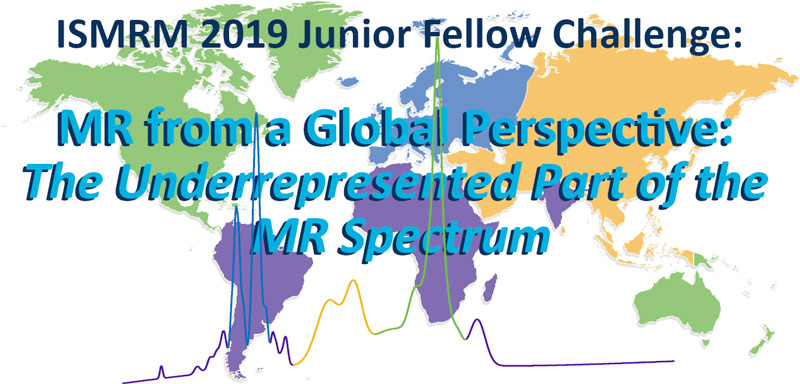
2019 Junior Fellow Challenge
MR from the Global Perspective: The Underrepresented Part of the MR Spectrum
South American MRI Challenge:
Prevention of Vascular Dementia
Dr. Maria Otaduy1, Prof. Dr. Claudia da Costa Leite1
1 Department of Radiology and Oncology, University of Sao Paulo, Sao Paulo, Brazil
CLOSED
Idea Submission Deadline: 30 January 2019, 23:59 EST
Prevalence of vascular dementia in Brazil and Latin America is higher than in the global north (e.g. US and Europe) probably due to socio-economical factors [1, 2]. Dementia represents a huge economical challenge for Brazil and South America given that in these countries the demographical pyramid is starting to invert. In contrast to other types of dementia, vascular dementia, which mostly affects the lower-income population, can be prevented. Nevertheless research in vascular dementia is not very extensive.
In São Paulo we have access to big MRI data resources from the public health system, given a relatively high density of MRI scanners and of population in comparison to other areas of Brazil and other Latin American countries. This data, which represents mostly the lower income target group, can be accessed. It is important to highlight that the distribution of MRI scanners in Brazil is very heterogeneous. While some states have the same ratio of MRI scanners per 100.000 habitants as in some European countries, other states of Brazil still do not reach the minimum recommended by the WHO.
The challenge is to generate a system that can store clinical data known as risk factors for vascular dementia such as for example blood pressure, glycemia, cholesterol together with MRI data (e.g. DICOM). Ideally MRI images should be processed automatically in order to quantify: T2 hyperintensities, ischemic lesions, and hemorrhagic lesions (T2* or SWI). Machine learning algorithms could then be applied to the data in order to establish a gender and age specific threshold for clinical data at which significant brain changes (correlated with a brain MR scan) start to occur. The final goal would be that, based on this data, action guidelines could be created for patients without access to MRI, but with other clinical data exceeding the threshold. These patients could then be referred to a brain MRI that would allow an early intervention to prevent the development of vascular dementia.
What would be the best way technically to generate such a system (software, data format, algorithms, MR parameters)?
References: [1] Grinberg LT, Nitrini R, Suemoto CK, et al. Prevalence of dementia subtypes in a developing country: a clinicopathological study. Clinics. 2013;68(8):1140-1145. [2] Kalaria, R. N., Maestre, G. E., Arizaga, et al. Alzheimer’s disease and vascular dementia in developing countries: prevalence, management, and risk factors. The Lancet Neurology 2008, 7(9), 812-826.
Submission Guidelines
Idea Submission
In order to ensure readability we put together some guidelines. Please submit your ideas as a pdf document of:
- Maximum one A4 page (including all figures) with minimum margins of 25.4 mm on all sides
- Maximum 20 MB
- Font type: Arial, Helvetica, or similar sans-serif typeface
- Minimum Font Size: 10 pt for normal text, author names and affiliations; and 12 pt for abstract title and subheaders (e.g. Introduction, Methods, …)
- Underline the presenting author
There is no strict format for the submission of your ideas on how to solve one of the challenges. Make sure the judges understand your idea, and that you try to answer the questions outlined in the challenges. Several graphics that illustrate your idea can be a great tool to make your idea more comprehensible.
Template & Video
You can download a template in .docx format here. After you finished editing, save the document as .pdf and upload it using the submission form below. Furthermore, we invite you to prepare a video – no longer than 5 minutes – outlining your idea and post it in the Slack channel #2019_jfs_challenges or post a link to the video in the submitted idea abstract.
Idea submission deadline: 30 January 2019, 23:59 EST

